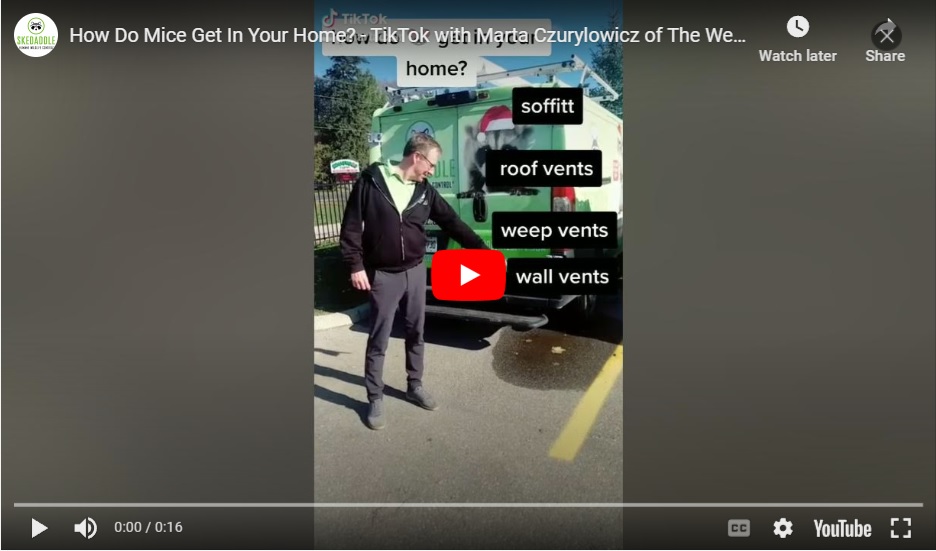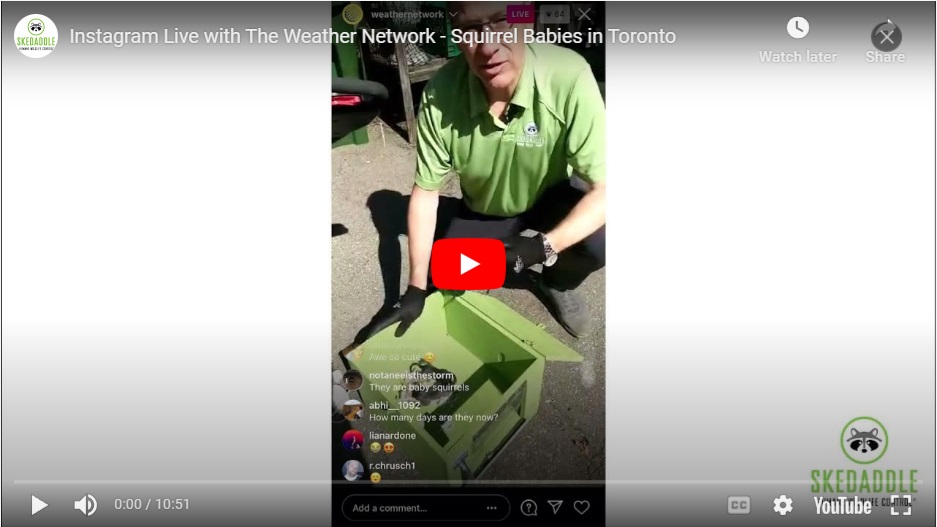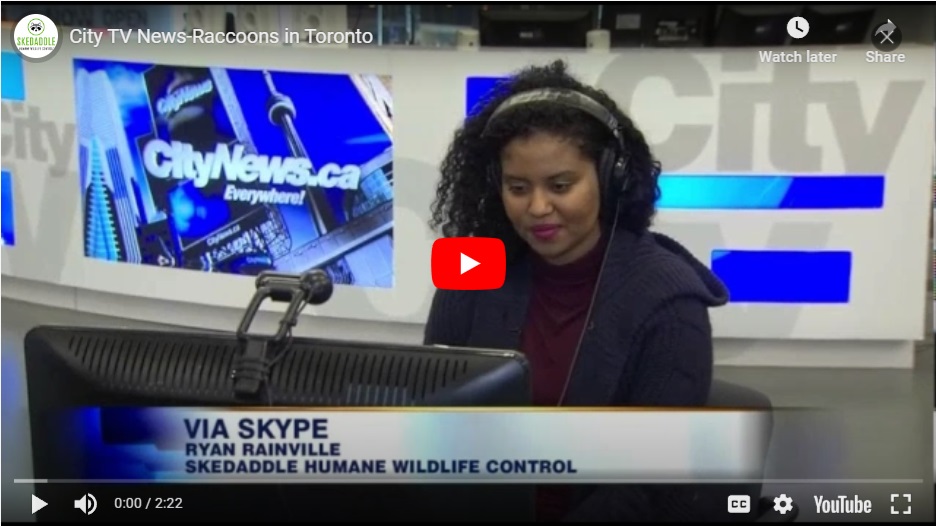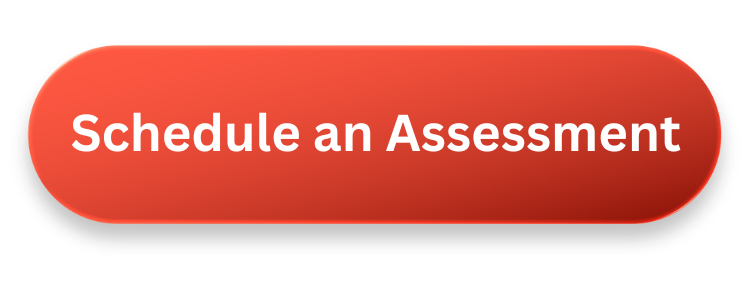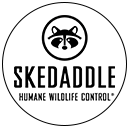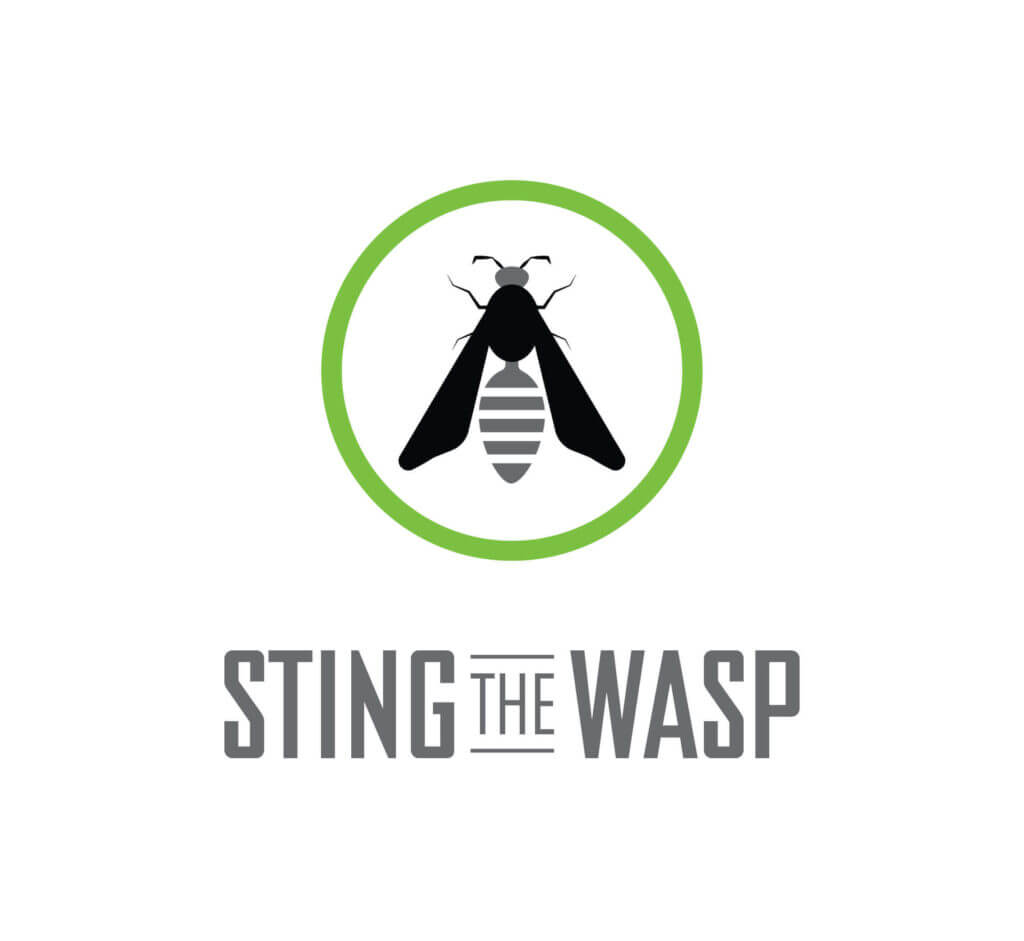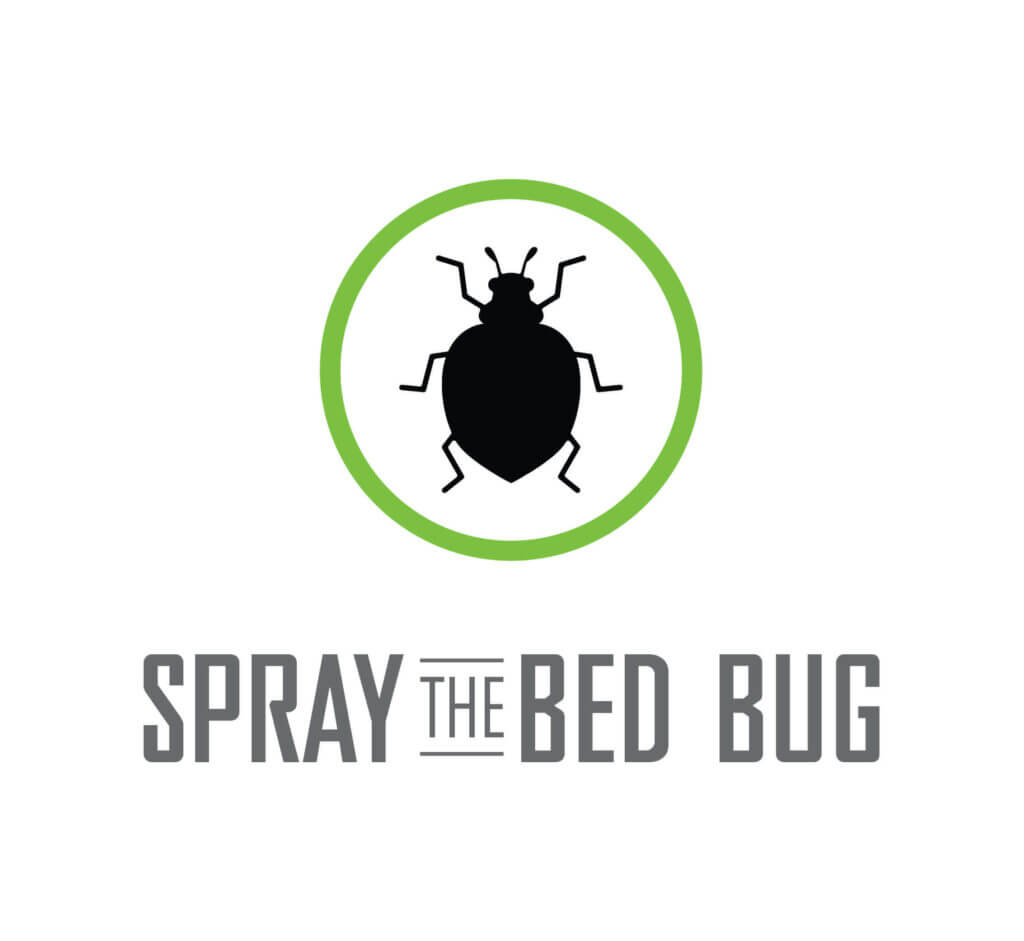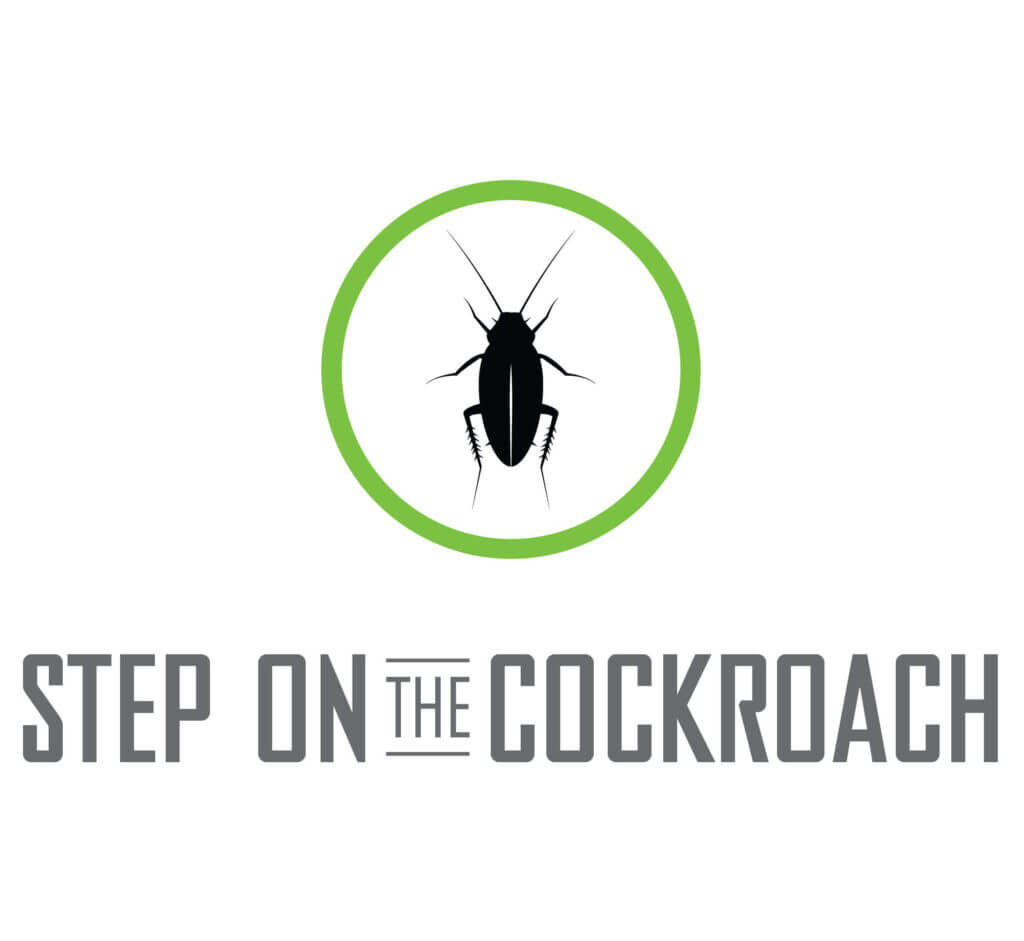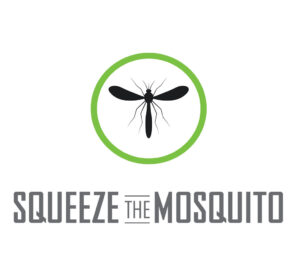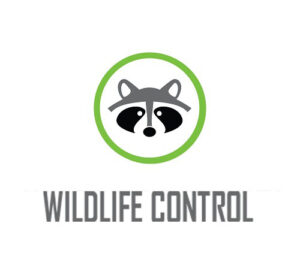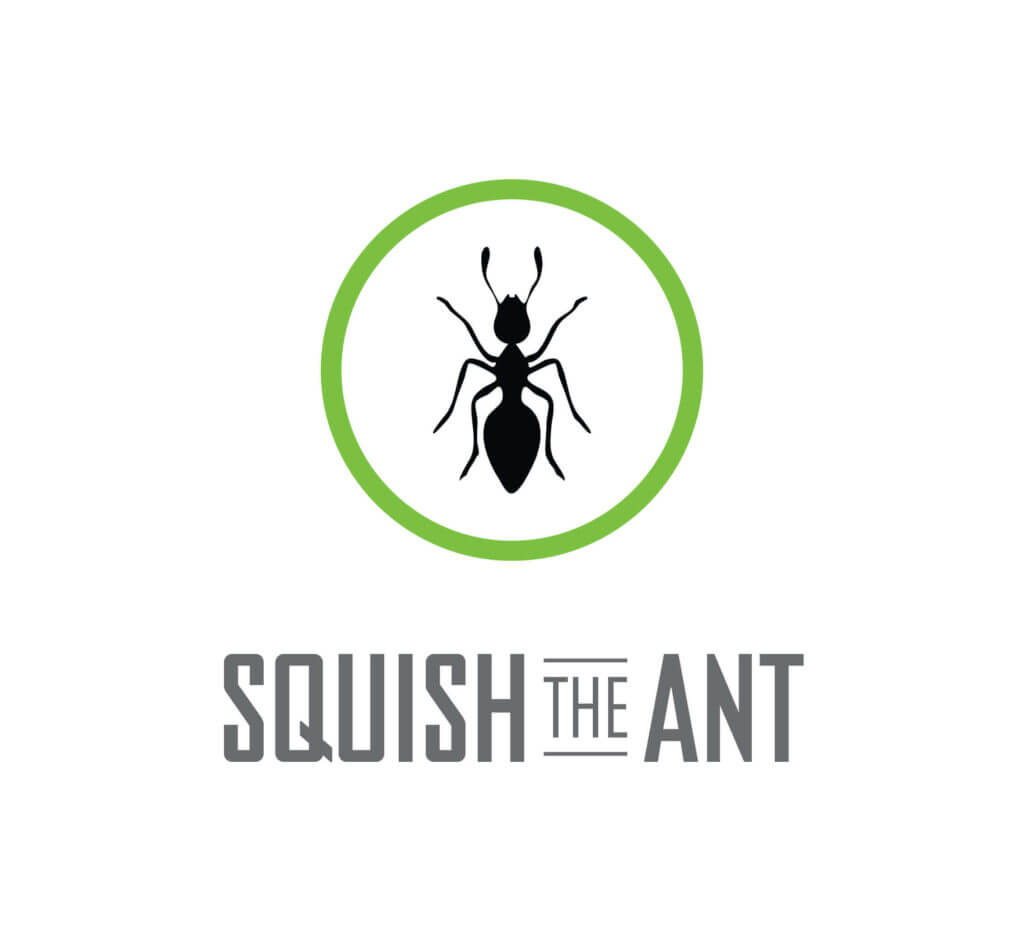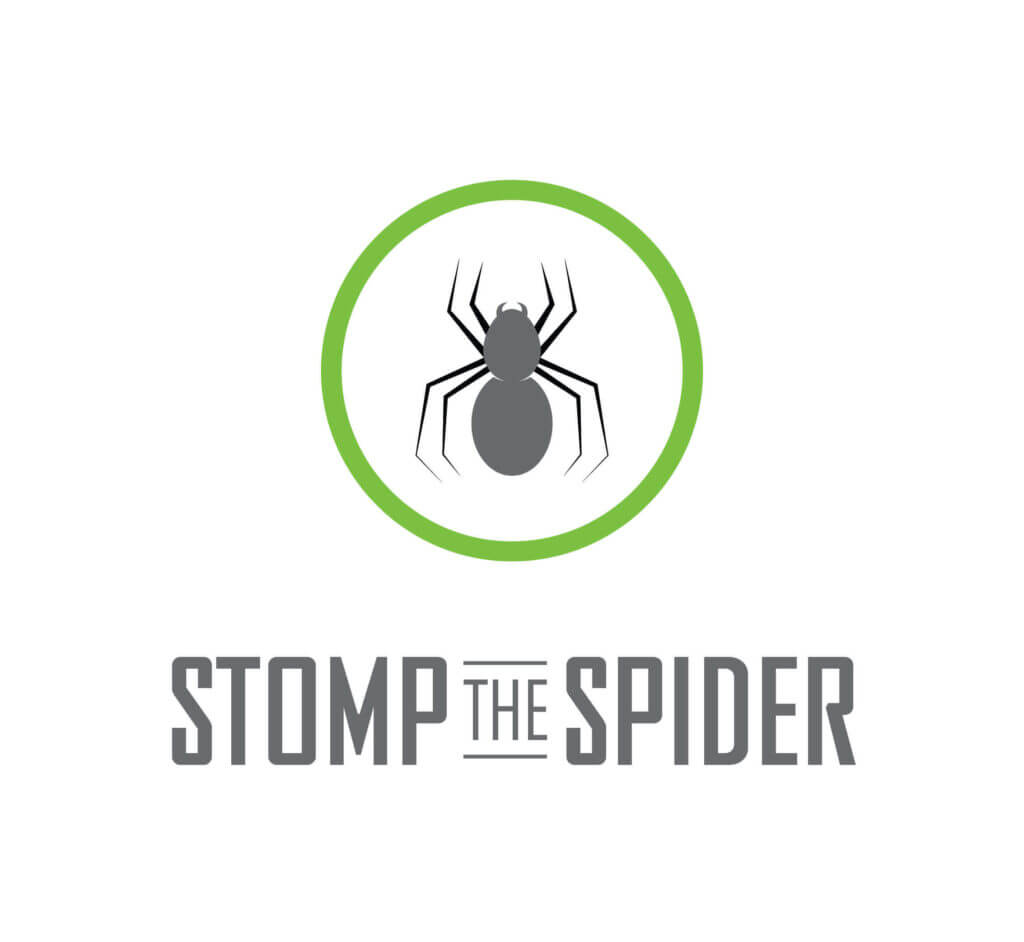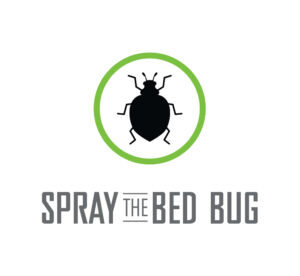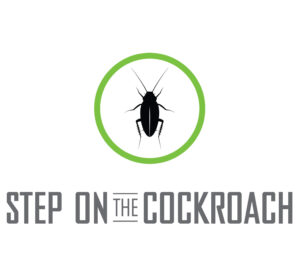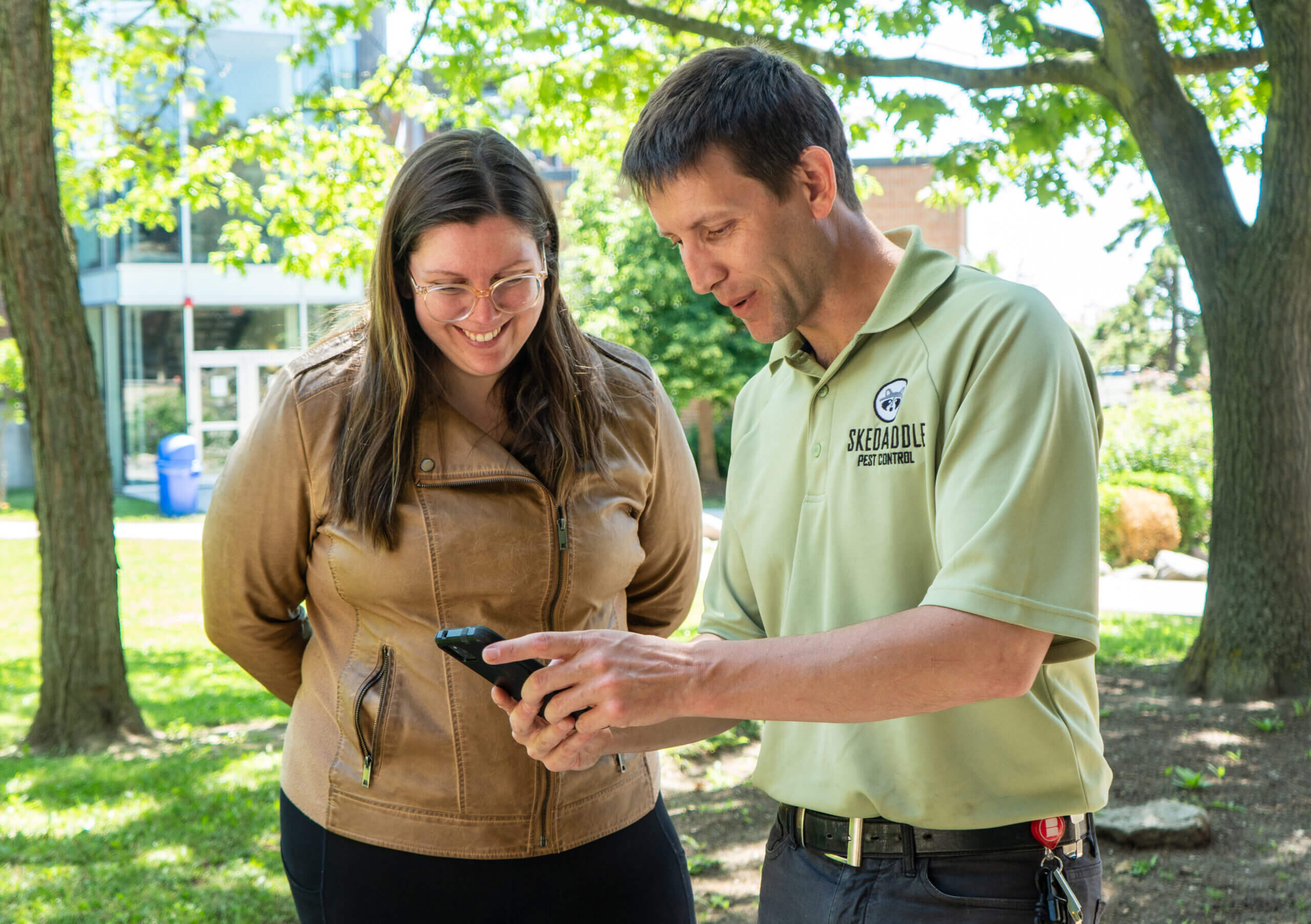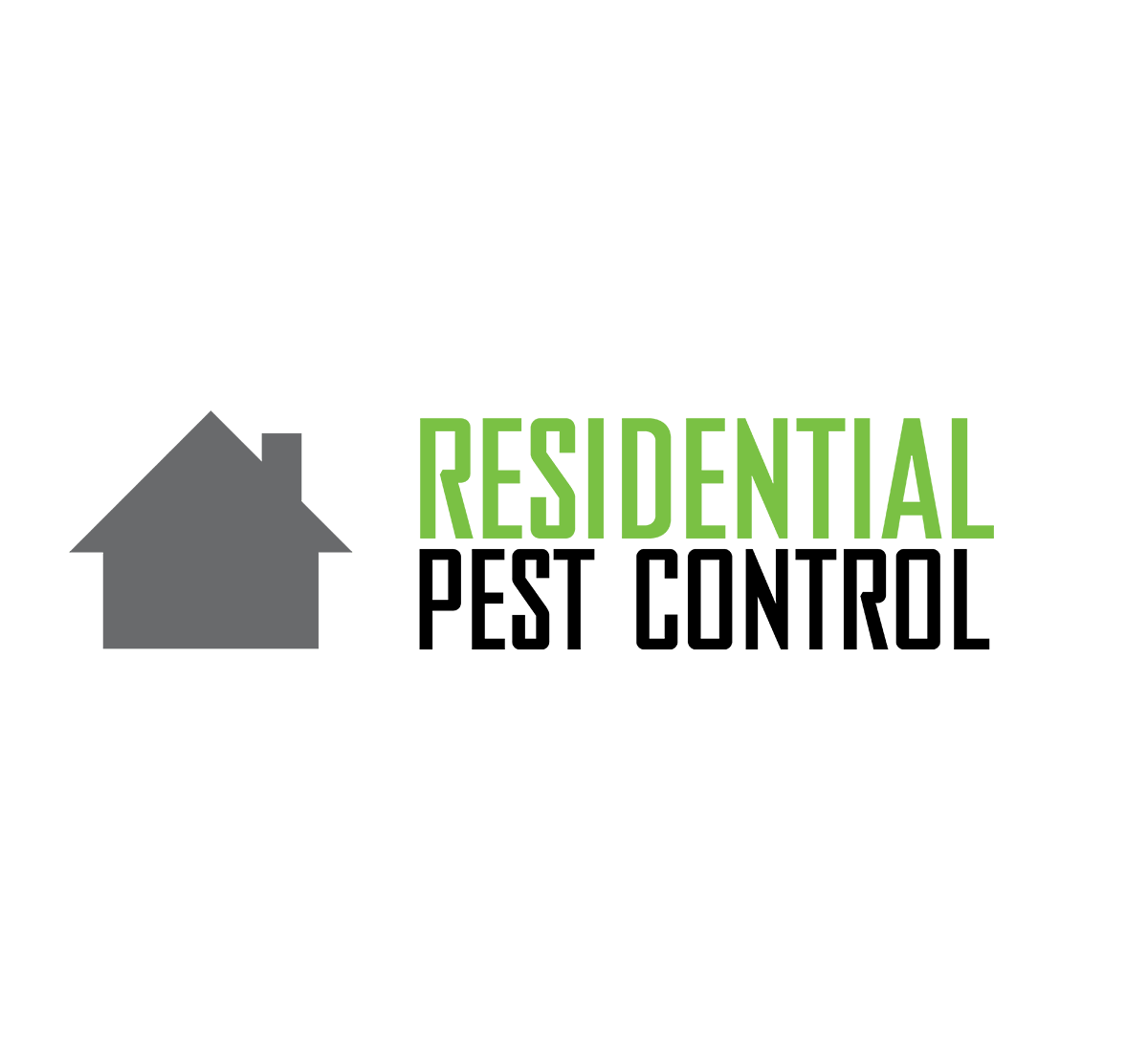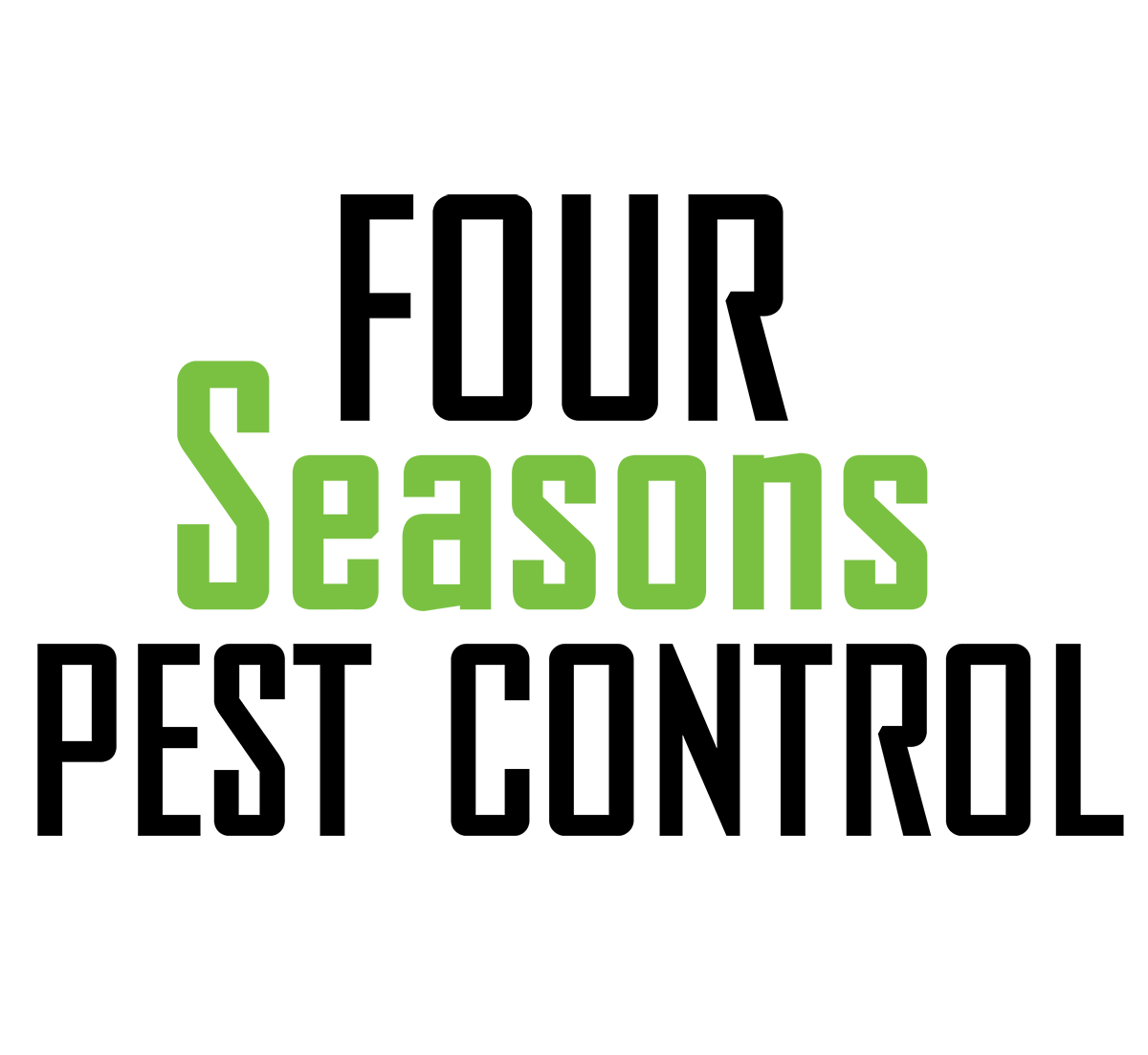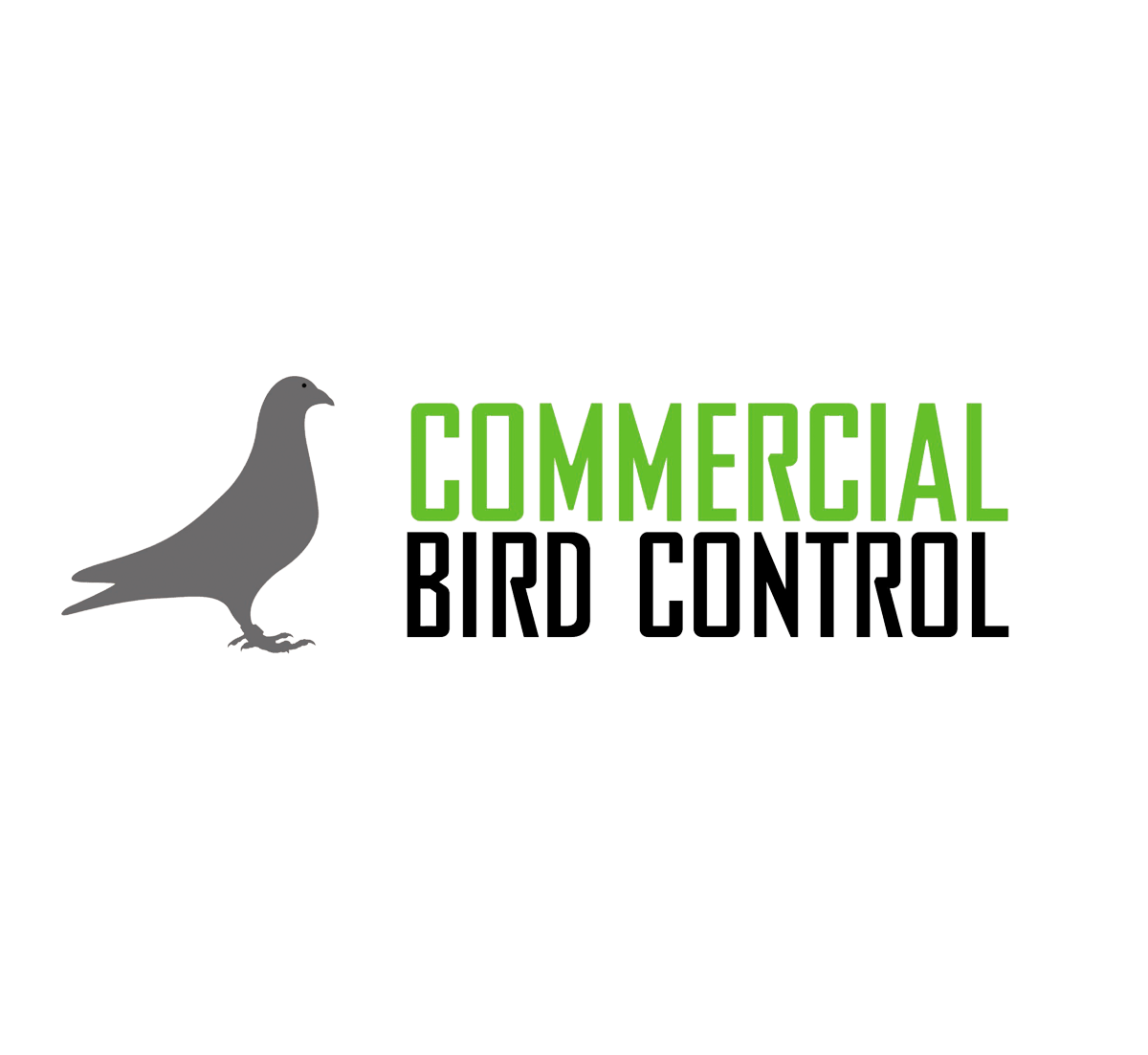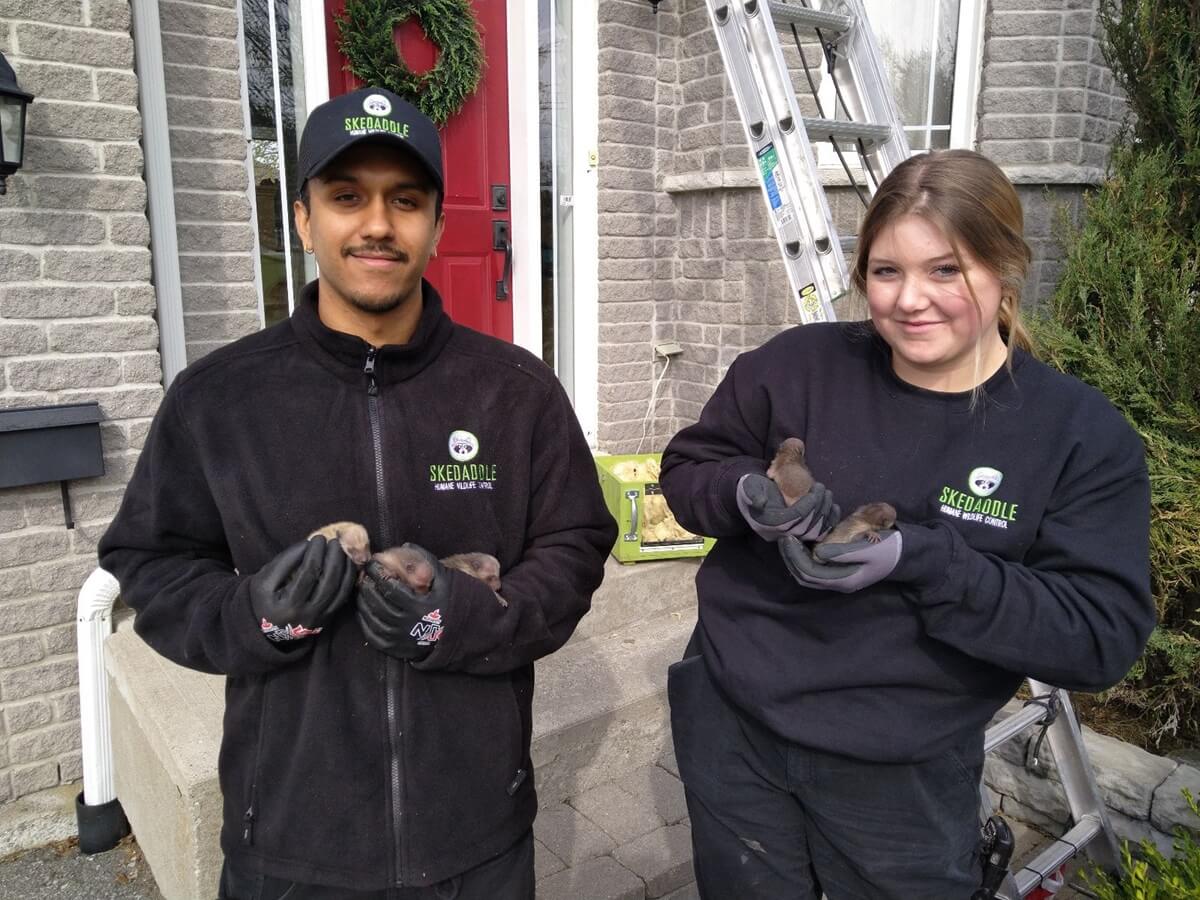
Each year countless residents of Toronto face wildlife problems in and around their homes. Despite rapid growth and an increasingly dense population, the city is home to a wide range of wildlife species. As wildlife have adapted to Toronto’s ever changing urban landscape, they often take up residence inside attics, chimneys, vents, sheds and garages where they can cause costly damage and put the health and wellbeing of residents in danger. Skedaddle Humane Wildlife Control understands the unique wildlife challenges Toronto residents face and provides safe and humane wildlife removal services across the GTA.
The City of Toronto was built on land that was once covered with dense forests and wetlands. Many of those forests were cleared to make way for agriculture and later intense urban development in the form of roads, sidewalks, railways and buildings. Toronto is also home to an extensive network of deep ravines that run north – south, with creeks and rivers like the Humber, Don and Rouge draining into Lake Ontario. Despite developments transforming or burying some of these ravines, many have been spared. Today these ravines represent a significant portion of Toronto’s urban tree canopy. These green space corridors provide shelter and travel routes for many urban animals in the city, and play a vital role in how Toronto wildlife thrives and travels throughout the city.
Over recent centuries, industrialization has caused many native species like moose, wolves and lynx populations to disappear from Toronto entirely. However, other native species like raccoons, squirrels, and skunks have come to flourish in the new urban landscape. Alongside Toronto’s native species, invasive animals, like rats and house mice, brought by early settlers, also thrive and often make their way into the city’s abundant Victorian era homes as well those built more recently. In urban settings, these animals do not rely on specific ecological environments or habitat niches to survive, instead they have successfully adapted to life in the city. Cities like Toronto offer many of the things wildlife need to succeed, namely plenty of shelter, abundant food sources and an absence of predators. Toronto’s strong and healthy biodiversity is cause for celebration but it is not without problems as each year thousands of home and business owners find themselves in conflict with urban wildlife.
Why Choose Skedaddle Toronto
Toronto is in many ways a concrete jungle, but that has not prevented it from developing a unique and complex biodiversity. The relationship between the city and its urban wildlife could best be described as complicated. Toronto residents will welcome blue jays and cardinals to their yards with bird feeders while lamenting increasing rat populations. Squirrels offer backyard entertainment with their incredible agility and climbing skills but can also wreak havoc on gardens.
Perhaps there is no more complicated relationship when it comes to wildlife than that between Toronto residents and raccoons. The CN Tower is certainly the city’s most iconic landmark but the animal most often associated with Toronto is the raccoon. Raccoons are active at night, and armed with a seemingly fearless attitude toward humans. Raccoons will topple garbage bins, destroy lawns in search of grubs and invade attics looking for shelter. In 2016, the City of Toronto spent $31 million designing and distributing “raccoon proof” green bins to residents to help combat the raccoon problem. Despite this investment, raccoons still find plentiful food options in the city and there seems to be no decline in the raccoon population.
In recent years rats have become an increasing problem for Torontoians throughout the city. As the city’s population becomes more dense through intensification efforts, rat populations are able to thrive in greater numbers. Rat sightings in subway stations are not at all uncommon for TTC riders. Dark underground spaces like the subway and the sewer system are some of the most rat infested areas of the city. These underground tunnel systems provide shelter for rats and allow them to safely travel. A significant portion of Toronto’s underground sewer pipes are old and constructed of cast-iron, a material that breaks and cracks over time. Subterranean rats often take advantage of Toronto’s aging sewer pipe and plumbing infrastructure to get inside the basements of homes and businesses.
Even without the help of damaged waste water pipes, rats can find gaps, holes and cracks on the exterior of a house and use them to gain access. No home is built with rats in mind, which means new and old construction throughout the city is susceptible to rat infestation. Toronto’s old Victorian homes are particularly vulnerable to rats that find gaps in old field stone foundations or chew through rotted wood framing to get inside. In many cases rats will take up residence behind wall cavities in basements where the damage they create may go unnoticed for a time. During their stay rats can chew electrical wiring and plumbing lines and leave harmful droppings behind.
As anyone living in Toronto knows, large scale construction is a constant and when buildings are torn down or when infrastructure is upgraded it can disturb existing rat harbourage sites and send them fleeing for new den sites. This places surrounding condos, apartments and detached homes at greater risk for displaced rat activity.
Challenging as the relationship might be, one thing is clear, urban wildlife in Toronto is here to stay. One of the most common and expensive conflicts between residents and wildlife happens when wildlife make their way into a home or property. It is not possible to trap all of Toronto’s nuisance animals and take them away, which is why properly protecting a property against entry is the only effective way to protect against wildlife infestation. There are no one-size-fits all solutions when wildlife make their way into your attic, walls, basement or vents, Toronto homeowners need the expertise and training of wildlife removal professionals to get the job done right. Our team of friendly technicians have been working with Toronto home and business owners to protect their properties for over 30 years. We know exactly where to look and have the tools, equipment and knowledge needed to safely keep wildlife out of your home for good.
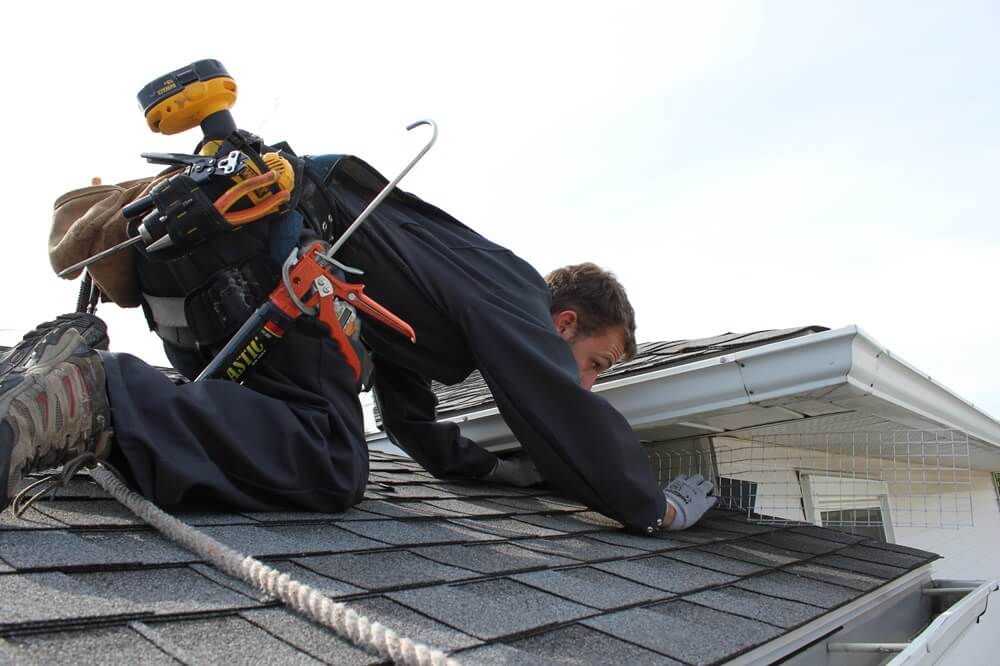
Skedaddle’s Approach to Wildlife Control
In 1989, Skedaddle Humane Wildlife Control was founded with the purpose of providing homeowners with humane solutions to their wildlife problems. Since then our team has been helping Toronto residents and business owners protect their homes and properties with unique exclusion techniques that offer long-term protection against wildlife entry. Our technicians understand the unique challenges that Toronto homeowners face with clever raccoons, squirrels, skunks, birds, bats, mice and rats. With over 30 years of experience there’s nothing we haven’t seen and no challenge too complex.
We know that when wildlife makes itself at home in your attic, walls or chimney it can be incredibly stressful. Removing wildlife and keeping them out isn’t easy and the task is made far more difficult during spring and summer when females give birth to litters of babies. Female raccoons, squirrels and skunks seek out secure den sites to have and raise their babies and attics, crawlspaces, chimneys and garages are some of their favourite places in an urban setting.
The arrival of wildlife babies in Toronto, usually starting in March makes removal more challenging for a number of reasons. To start, there’s no way to trap or chase away young litters, they’re born with their eyes closed and grow up over a period of months. The only way to remove baby raccoons, squirrels and skunks is by hand and that means finding the litter the mother has carefully stashed away and retrieving them from her. Skedaddle specializes in humanely removing wildlife babies from the hardest to reach areas of homes and reuniting them with their mother on the outside. With her entry point blocked and the rest of the home secured by our team she can then relocate them to one of her other den sites in the area.
When faced with a wildlife problem, trust our trained technicians to remove the wildlife humanely, clean up the mess they have left behind and prevent their re-entry. Never attempt to handle or remove wildlife on your own. Failure to account for or properly remove wildlife babies can lead to their mother abandoning them inside your home or unnecessary home damage. Our team has the experience and expertise to remove wildlife safely, humanely, and effectively. It all begins with a thorough inspection of your property to develop a customized removal, clean up and prevention plan to ensure your home is protected. Call us today to schedule a visit and protect your home and family.
Skedaddle Toronto in the News
As a part of our commitment to helping Torontonians prevent and resolve wildlife conflicts in a safe and healthy way, our team makes every effort to share our knowledge about urban wildlife. Each year, members of our team connect with local media outlets to discuss the steps homeowners can take to protect their attics, sheds, garages and basements from nuisance wildlife.
SKEDADDLE STORIES
Learning About Rabies in Toronto
Rabies is a deadly virus that can be spread to humans through a bite or scratch from an infected mammal. Although Toronto was spared from the rise in raccoon rabies experienced in 2015 in nearby Hamilton and the Niagara Region, in recent years positive rabies cases have been confirmed in bats in Toronto. Toronto Public Health reported four bats had tested positive for the rabies virus in 2022.
Rabies isn’t the only concern for wildlife in Toronto, in 2022 and 2023 there was a significant rise in the distemper virus among Toronto raccoons. Distemper is a deadly airborne virus that cannot be spread to humans but can be transmitted to dogs by infested raccoons. During the 2023 distemper outbreak, Toronto Public Health received 88 accounts of people being scratched or bitten by raccoons in the city. This figure represented a 117% increase in reported bites and scratches as compared to the average between 2018 – 2022.
Once an infected animal has made their way inside your Toronto home, removal is extremely dangerous and requires professional care. The team at Skedaddle has been handling bats, raccoons and other wildlife species for over 30 years. When dealing with wildlife in small enclosed areas like an attic space, there is a high risk of
injury and potential infection. Our Toronto team understands how to remove potentially aggressive wildlife safely.
To protect yourself, family and pets, it is best to keep your distance and assume that any wild animal could be a carrier of harmful diseases. Removal professionals have the training, protective equipment and experience needed to safely handle wildlife living in your home.
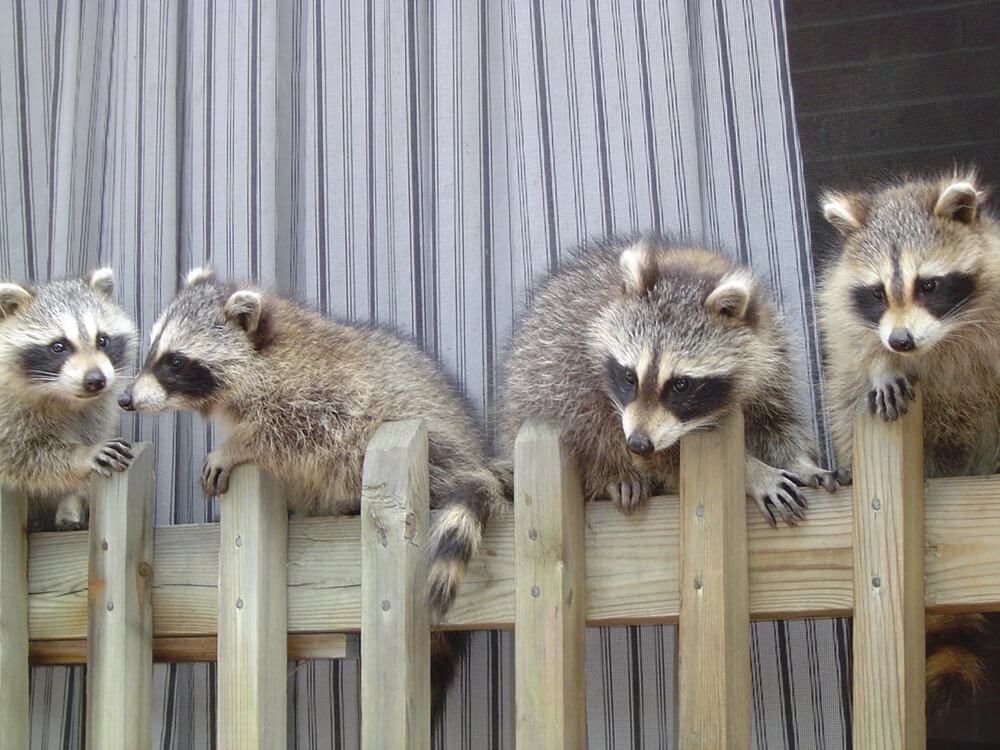
Skedaddle Toronto, Did You Know?
Can I Feed Wildlife in Toronto?
The City of Toronto has a By-law that prohibits the feeding of any wildlife species. Feeding wildlife can lead to potentially dangerous consequences for the animal and for people. Residents that feed wildlife in Toronto parks can face a fine of up to $365.
Are you Allowed to Trap Wildlife in Toronto?
Rather than the City of Toronto, the Province of Ontario has regulations in place for the removal of wildlife. The province’s regulations aim to prevent the inhumane treatment of wildlife and prohibit wildlife from being released further than one kilometre from where they were captured. Most wildlife experts agree that trapping and relocating wildlife is both inhumane and ineffective for long-term control.
Is Toronto the Raccoon Capital of Canada?
Toronto is the raccoon capital of Canada. Toronto raccoons are able to thrive in great numbers due to the ample amount of food and shelter available in the city. Studies have shown that there are up to approximately 100 raccoons per square kilometre in some parts of Toronto.
What Areas of Toronto Does Skedaddle Service?
Skedaddle Toronto provides service across the entire GTA including Scarborough, Etobicoke, York, East York and North York.
Does the City of Toronto Remove Wildlife?
The City of Toronto will remove large deceased animals from a property and also deals with sick, diseased and injured wildlife that pose an immediate danger to the public. This means that removing nuisance wildlife on or in a property that does pose an immediate danger, is the responsibility of the property owner.
Does Skedaddle Toronto Provide Pest Control Services?
In addition to our wildlife removal services, Skedaddle offers Toronto home and business owners with safe and reliable pest control services. Common pests that invade Toronto businesses and homes include, bedbugs, cockroaches, spiders, ants and wasps.
How Can I Tell If I Have a Wildlife Infestation in My Home?
Signs of a wildlife infestation can vary depending on the species, but some common indicators include hearing noises in your attic or walls. You may also notice droppings, chewed food packages, or gnawed wood, which indicate rodents or other animals are present. If you find nests made of shredded materials, such as insulation or fabric, or if you smell foul odors, these can also be signs that wildlife is living in your home. Additionally, if you notice signs of damage to the exterior of your home, such as torn screens, broken soffits, or displaced roof shingles, it could be a sign that animals are trying to get inside. If you observe any of these signs, it’s important to call a wildlife control professional to assess the situation and prevent further damage.
CHECK OUT OUR LATEST BLOG
Could Construction In The City Be Driving Rats Into Your Home?
The Most Common Wildlife Problems in Urban Areas
Wildlife Babies: What to Do When You Find Them


